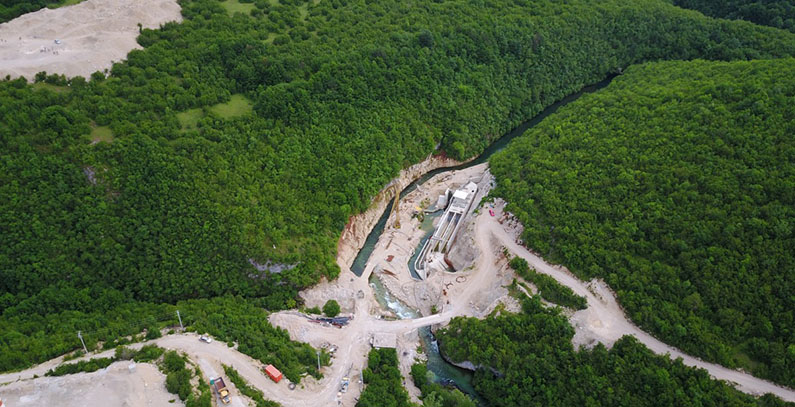
Medna hydropower plant on the Sana river in Bosnia and Herzegovina (Photo: Matic Oblak)
Rivers are the source of life and also the livelihoods of surrounding communities. Following an almost one-year standoff in nearby Fojnica in Bosnia and Herzegovina, residents of the Kruščica village decided in 2017 to defend the river of the same name with their bodies. The resistance started when machines rolled in to build two small hydropower plants. The fight lasted for five hundred days.
The struggle, spearheaded by local women, slowly became known throughout the world as more people got involved and both the established and alternative media spread the word. During the round-the-clock watch until December 2018 near the designated hydropower unit construction sites, the brave women of Kruščica were targeted by threats and fined.
Shocked and moved, the civil society and individuals mobilized to help them. On one occasion, a special police squad was brought to disperse the crowd. Videos from the incident show dozens of them in riot gear beating and arresting the women, who were sitting on a bridge and holding hands.
The women of Kruščica have blocked the construction sites of small hydropower plants for more than 500 days and nights until a court scrapped the projects
A court scrapped the projects in the end. A similar victory was achieved in 2013 in Fojnica, where participants won’t be able to forget the violent attacks by private security guards. EuroNatur has recently awarded the women of Kruščica.
Wildlife, people in danger from hydropower
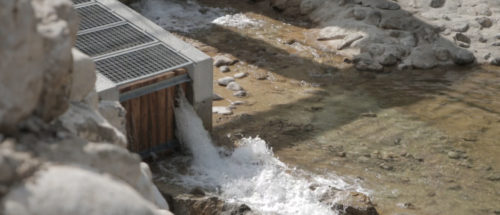
In order to install a small hydropower turbine, investors more often than not cut the forest and make roads for the equipment to get to the location. Hundreds of water streams are planned for such systems in the Balkans.
The damage for river plants or fish is immediate and most easily seen, as they are left with little or no water. It is diverted into long pipes and the ground dries out, opening the way for potentially deadly erosion.
There were cases where villages lost access to water for cattle or gardening. In other examples, flash floods became more frequent. In the long term, air quality and soil fertility deteriorate.
Builders of hydroelectric facilities may hamper pollination due to the effects reaching bees and other insects, so crops take a hit. Nature enthusiasts are stunned by the destruction of the landscape and scientists warn medical herbs are disappearing.
River jewels
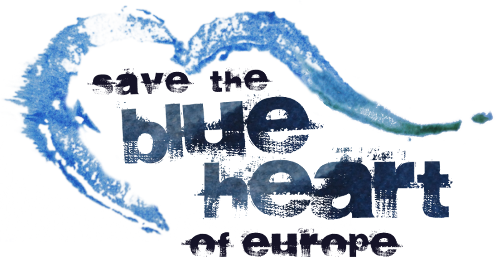
Europe’s southeast is known for some of the last pristine water streams or parts of them. Ulrich Eichelmann, one of the founders of a campaign called Save the Blue Heart of Europe, highlights the Soča, Zrmanja, Una, Neretva, Morača and Tara as some of the “river jewels.”
The initiative resulted in substantial research in hydrology and biodiversity and spreading the word about biological connectivity and endemism. More than a hundred endangered species have been identified in the region, particularly fish and mollusks. The campaign points to a study that revealed 40% of all jeopardized freshwater mussels and snails live there and calls it the most important hotspot of its kind in the continent.
Rare vegetation communities and water-dependent fauna are found at local rivers, but so are new or rediscovered species
The authors have highlighted rare vegetation communities and water-dependent fauna, but also some new or rediscovered species. Save the Blue Heart of Europe rallied especially with regard to the case of the Danube salmon, surviving in a handful of rivers and under threat of dam projects.
The team was surprised there had been no available comprehensive data before about river characteristics, biodiversity and the number of dams.
“People in the Balkans must know that they have something extraordinary, something that noone else has. In the future, they might make a living out of this beauty, for sure more money than with damming the lifelines,” in Eichelmann’s words.
From initiative to movement
Save the Blue Heart of Europe was founded in 2012 by the EuroNatur Foundation and RiverWatch. It has widened as partners like Patagonia, CEE Bankwatch Network and ClientEarth have joined and support was provided for local groups.
The network’s activities are centered on the Vjosa, Mavrovo National Park, the Sava and the rivers in BiH
The participants in the movement argue that one and a half thousand kilometers of near-natural river stretches have been degraded from 2011 to 2018. The focus is on small hydropower plants, which they say harm the environment and generate little electricity.
No intention to abolish hydropower development overall
Save the Blue Heart of Europe dedicated its energy to stopping dam projects. It demands higher standards for preservation and to determine areas where construction would be forbidden. Rather than pushing to abolish hydropower development totally, the activists are calling for spatial planning to be conducted with conservation as an important factor.
Eichelmann, chief executive of RiverWatch, notes there are thousands of them in the Balkans and acknowledges it “was rather a maniacal idea” to fight them all as it is difficult enough to stand against even one.
“But exactly that was the basic idea and the strength of Save the Blue Heart of Europe. Try something that hasn’t been done before. Tell the truth and show the dimension of the whole threat,” he stated.
Lawsuit tsunami
A so-called Armada of Lawyers has been assembled within the campaign to protect rivers with “a lawsuit tsunami,” based on international conventions and the European Union and Energy Community rules.
Progress has been made on several fronts, though legal processes have a way of resulting in ambiguous and incomplete rulings.
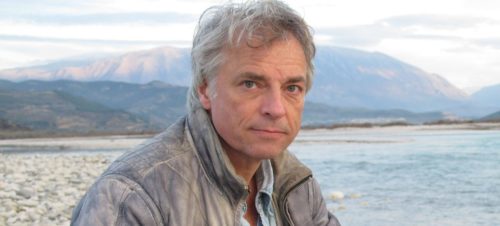
It will be a long fight, no doubt about it. But it is worth it.
There are not many challenges out there that are so important and valuable than protecting Europe’s blue heart.
Ulrich Eichelmann, CEO of RiverWatch and coordinator of Save the Blue Heart of Europe
Plans for three hydropower plants in Mavrovo, a protected area in North Macedonia, crumbled last year as they lost construction permits and concessions after complaints by Blue Heart partner Front 21/42. The European Bank for Reconstruction and Development sank the Boškov most hydropower blueprint of 70 MW in 2017.
A national tribunal put an end to the Mokrice HPP project in Slovenia last year. The facility was supposed to be built on the Sava river. Guardians of water streams in Stara planina and other mountainous areas in Serbia’s east and southeast have had partial success in stopping construction work for numerous power plants.
Celebrities join action
International stars Leonardo DiCaprio and Manu Chao raised their voices on behalf of the struggle in Stara planina and the Vjosa in Albania. Popular musicians Rambo Amadeus, originally from Montenegro, Albania’s Eda Zari, Tamara Obrovac from Croatia and Damir Imamović from BiH have held a free concert at a square in Sarajevo to raise awareness about the destruction of the rivers and their significance.
A group of organizations recently demanded the construction of hydropower plants to be blocked until a complete policy revision and warned governments in the region to respect protected areas and let people participate in deciding on the changes.
One of the organizers of the event in Sarajevo which resulted in the declaration was the Center for Environment from Banja Luka in BiH. Its member Nestor Ruiz said it is protecting some of the last free-flowing rivers in Europe and a significant water resource for future generations.

The rivers in Bosnia and Herzegovina are under great pressure from the construction of small hydropower plants, which pose a threat to biodiversity and a healthy environment as well as for the local community. They block its access to clean water, while at the same time their contribution to total power production is negligible.
Today there are better, more sustainable, less harming and more cost-effective renewable sources for electricity generation.
Nestor Ruiz, Center for Environment
It highlighted its participation in the struggle against the installation of small hydropower units in the Doljanka river, where famous basketball player Mirza Teletović got concessions for two systems.
The Center for Environment is responsible for the premiere of the Blue Heart documentary on the Idbar dam near Konjic, where artist and activist Luka Tomac earlier painted a protest mural. The film was commissioned by sports brand Patagonia. It was translated into 14 languages.
Stimulus must go to cleaner solutions
The nongovernmental organization has supported campaigns for the protection of the rivers Sana and Vrbas, where it claimed victory as the authorities accepted to shield them from dam construction. Furthermore, it has produced a report and a study on small hydropower plants and their economic feasibility.
Incentives for the facilities should be redirected for solar and wind systems, the Center for Environment underscores. It is a member of biodiversity conservation network BioNET, gathering 14 civil society organisations from seven economies of the Western Balkans (Albania, Bosnia and Herzegovina, Croatia, Kosovo*, Montenegro, North Macedonia and Serbia) devoted to the same goal. It joined the Blue Heart in 2017 and backed the protesters in Kruščica.
The group is helping get government institutions and independent organizations in the region together and safeguard nature’s health. It is insisting on legal access to justice and even works to involve private firms in the efforts regarding the richness of life and connectedness between its forms.
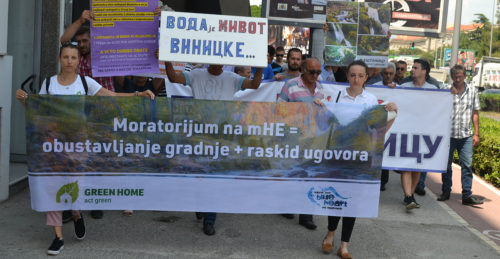
Challenges
The latest data show plans for almost 2,700 hydropower units in Southeastern Europe and the tally is still growing.
Just in the category between 1 MW and 10 MW in capacity, Albania leads the way with 241. The number of blueprints in the smaller category, from 0.1 MW to 1 MW, came in at a stunning 898 for Greece. The country is trailed at the top of the chart by Serbia, with 698.
There are more than eighty hydropower plants in Bosnia and Herzegovina, which has 244 rivers. The number compares to more than three hundred planned turbines.
Some sites are in uninhabited areas or locals are simply kept in the dark about the plans and what the impact on their lives would be. There were cases where investors managed to overturn court rulings and get environmental permits back.
There are 244 rivers in BiH and the number of blueprints for hydropower plants tops three hundred
Reports from the ground clearly point to ongoing corruption and pressure on the judiciary.
The fight is far from over. The society can survive only in harmony with nature and the people have the power to take control.
Furthermore, biodiversity doesn’t only require defensive efforts against harmful hydropower. Clean air, water and soil and the environment warrant major investments in time, money and strength.















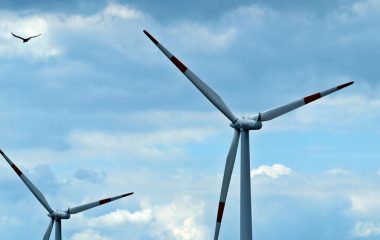


Be the first one to comment on this article.